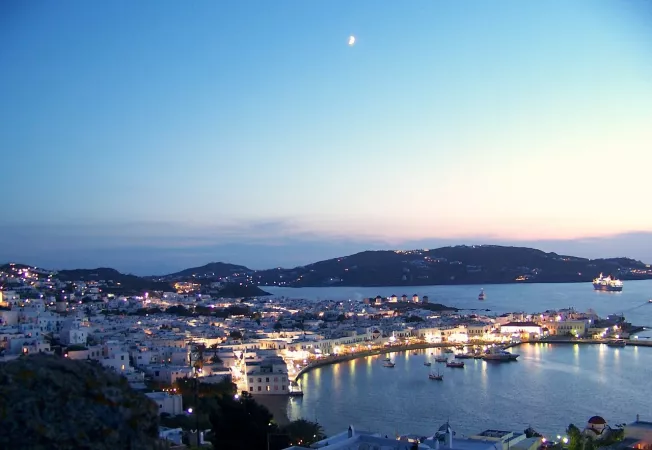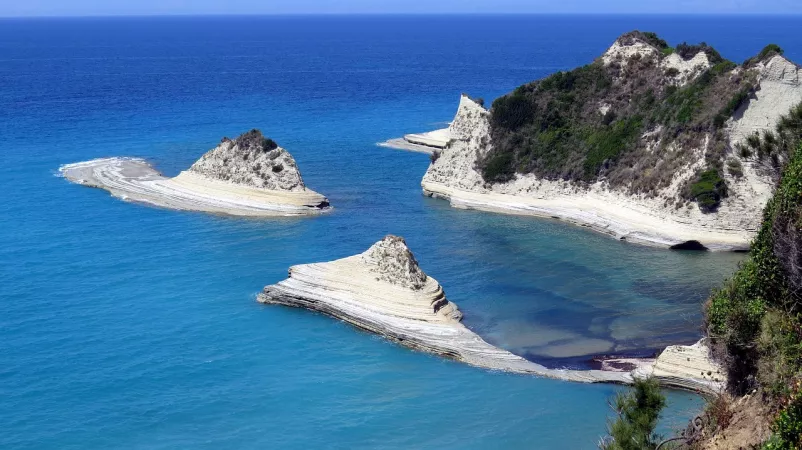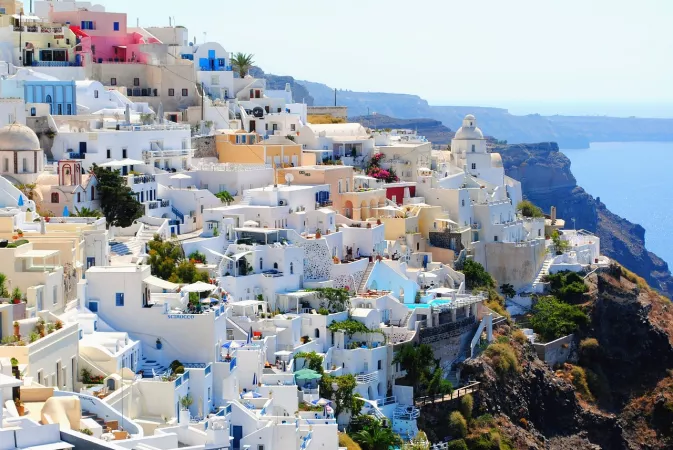
Mykonos Travel Guide
Mykonos, a Greek island in the Aegean Sea, is known for its vibrant nightlife, picturesque villages, and beautiful beaches. Its whitewashed buildings with blue accents against the backdrop of the turquoise sea make it a popular destination for tourists. The island has a rich history, with archaeological sites dating back to ancient times, and is famous for its cosmopolitan atmosphere.Top Attractions in Mykonos
1. Little Venice 2. Windmills of Mykonos 3. Archaeological Museum of Mykonos 4. Paradise Beach 5. Delos Island Day TripMykonos is Famous for
Its vibrant nightlife and stunning beaches.Top Attractions in Mykonos
- Little Venice - Windmills of Mykonos - Archaeological Museum of Mykonos - Paradise Beach - Delos Island Day TripWhat's Great about Travelling to Mykonos?
- Vibrant nightlife - Beautiful beaches - Picturesque villages - Great for partygoers and beach loversWhat's Not So Great about Travelling to Mykonos?
- Expensive - Crowded during peak season - Limited public transportationTravel Tips for Mykonos
- Check visa requirements before traveling - Renting a car or scooter is recommended for exploring the island - Be cautious of pickpockets in crowded areasImportant Mykonos trip information
- Ideal Duration: 3-5 days
- Best Time to Visit: May-September
- Nearby Airports and Railway Stations: Mykonos Airport, no railway station on the island
Top 41 Places to visit in Mykonos
FAQ's on Mykonos
Q1: What is the best time to visit Mykonos?
The best time to visit Mykonos is during the shoulder seasons of late April to early June and September to early October. During these times, the weather is pleasant, the beaches are less crowded, and accommodation prices are more affordable compared to the peak summer months. If you prefer lively nightlife and vibrant atmosphere, July and August are the peak tourist months with hot weather, numerous events, and parties.
Q2: Do I need a visa to travel to Mykonos?
Most visitors to Mykonos, as part of Greece, do not need a visa for stays up to 90 days within a 180-day period for tourism or business purposes. However, it's essential to check visa requirements based on your nationality before traveling. Make sure your passport is valid for at least three months beyond your planned departure date.
Q3: What are the must-visit attractions in Mykonos?
Mykonos is renowned for its beautiful beaches like Paradise Beach and Super Paradise Beach, the iconic windmills, Little Venice with its picturesque houses, and the charming streets of Mykonos Town (Chora). Don't miss the archaeological site of Delos, a short boat ride away, and the vibrant nightlife in Mykonos Town.
Q4: Is Mykonos a safe place to travel?
Mykonos is generally a safe destination for travelers. However, like any tourist hotspot, it's essential to be cautious of pickpocketing in crowded areas and to be aware of your surroundings, especially at night. Avoid isolated areas and take necessary precautions to safeguard your belongings.
Q5: What is the local currency in Mykonos and can I use credit cards?
The local currency in Mykonos, as in Greece, is the Euro (€). ATMs are widely available in Mykonos Town and major tourist areas, accepting major credit and debit cards. While credit cards are widely accepted in hotels, restaurants, and shops, it's advisable to carry some cash for smaller establishments and local markets.
Q6: What is the local cuisine like in Mykonos?
Mykonian cuisine is a delightful mix of fresh seafood, Mediterranean flavors, and traditional Greek dishes. Try local specialties like kopanisti (spicy cheese spread), louza (cured pork), and the famous Mykonian sausages. Seafood lovers will enjoy fresh fish and seafood meze, accompanied by local wine or ouzo. Vegetarians will find plenty of options like Greek salads, fava dip, and stuffed vine leaves.
Q7: What transportation options are available in Mykonos?
In Mykonos, you can get around by public buses that connect major beaches and towns, taxis available at taxi ranks, rental cars, scooters, or ATVs for independent exploration. Water taxis are also a popular way to hop between beaches or nearby islands. Walking and cycling are great options in Mykonos Town due to its narrow streets.
Q8: Are there any cultural norms or etiquette I should be aware of when visiting Mykonos?
When visiting Mykonos, it's important to respect the local customs and traditions. Dress modestly when visiting churches or religious sites, greet locals with a friendly "Yasas" (hello), and avoid photographing residents without permission. Tipping is appreciated in restaurants, cafes, and for services. During siesta hours, many shops close, so plan your activities accordingly. Lastly, embrace the relaxed pace of island life and enjoy the hospitality of the Mykonian people.
Q9: I am a travel agent. How can I buy travel leads of Mykonos?
Register yourself as a travel agent at agents.tripclap.com and then you can buy travel leads to Mykonos once your account is approved. For more details contact our support team at +91-8069186564 or support@tripclap.com


